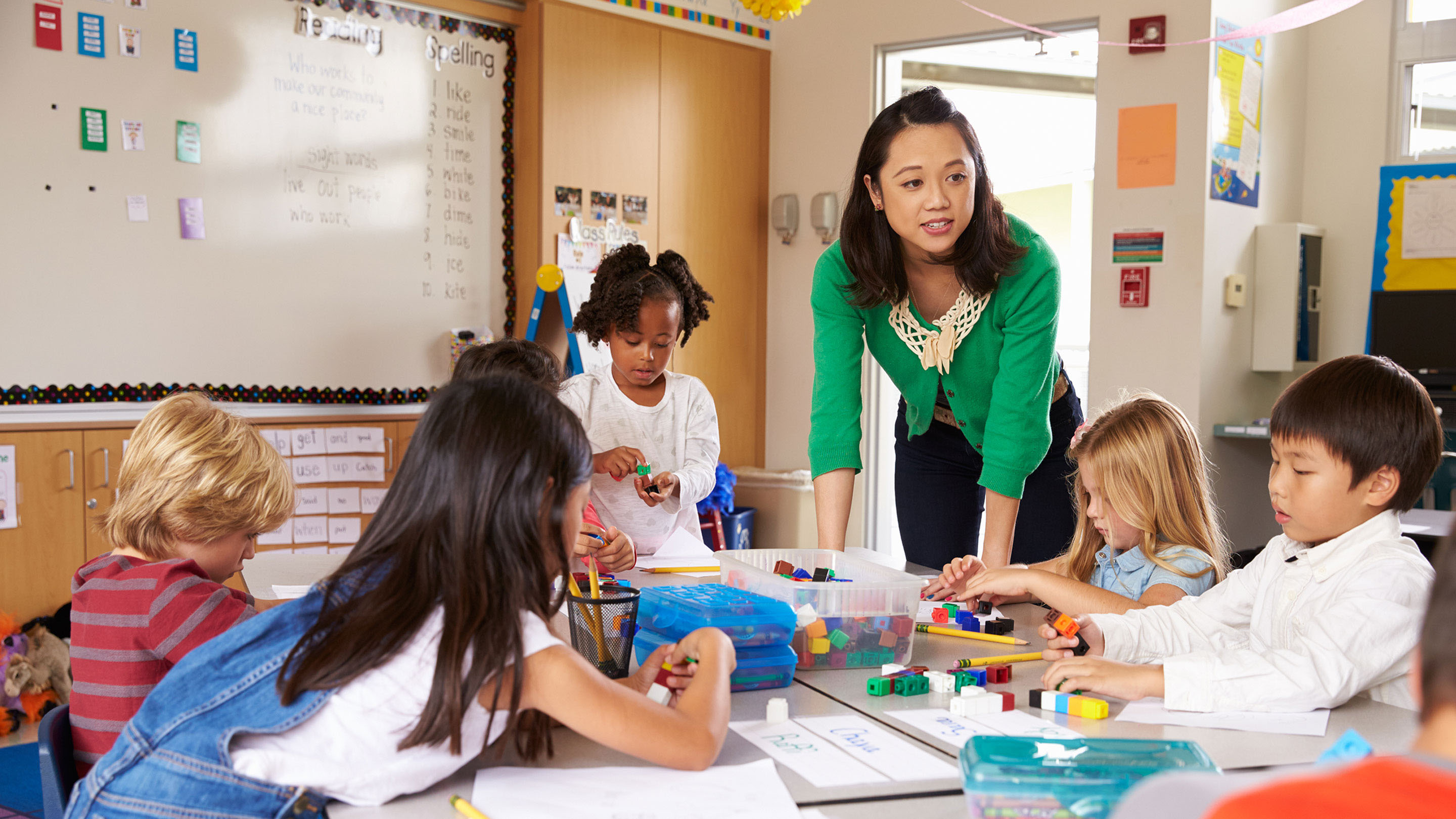Unlock Your Child’s Potential with Primary Science Tuition Singapore
Unlock Your Child’s Potential with Primary Science Tuition Singapore
Blog Article
A Comprehensive Guide to the Different Discovering Approaches in Primary Science Direction
The exploration of diverse knowing approaches in primary scientific research instruction offers a possibility for instructors to boost pupil involvement and comprehension dramatically. By analyzing hands-on discovering techniques, inquiry-based approaches, and joint techniques, we can determine reliable methods that cater to different finding out styles.

Hands-On Understanding Techniques
Hands-on understanding strategies play an essential role in main scientific research instruction, involving pupils in energetic exploration and testing. These methods permit students to communicate directly with sensations and materials, fostering a deeper understanding of scientific concepts. By utilizing manipulatives, versions, and real-life experiments, instructors create a setting where students can observe, assume, and test their concepts.
Such strategies not just enhance understanding but also grow critical reasoning and analytic abilities. When students take part in tasks like constructing straightforward makers, growing seeds, or carrying out chemical reactions, they are motivated to ask inquiries and seek answers with their own monitorings. This experiential method assists to demystify complex clinical concepts, making them more relatable and easily accessible.
Furthermore, hands-on understanding advertises collaboration amongst peers, as trainees usually function in teams to carry out experiments or share searchings for. This teamwork not only enriches their understanding experience yet additionally develops essential social skills. Eventually, incorporating hands-on methods in key science guideline promotes a lifelong love of understanding and inquisitiveness concerning the environment, laying a solid foundation for future scholastic searches in science and beyond.
Inquiry-Based Understanding
Inquiry-based understanding is a training strategy that motivates trainees to ask questions, examine phenomena, and construct their very own understanding of clinical concepts. This technique moves the emphasis from typical teacher-led guideline to an extra student-centered experience, where students take the effort in their academic journey. By promoting curiosity, inquiry-based understanding advertises deeper engagement with the material, allowing pupils to check out topics in a significant context.
In method, this method usually entails hands-on experiments, monitorings, and vital reasoning tasks that line up carefully with the scientific approach. Students are encouraged to create hypotheses, layout examinations, and analyze information, which grows vital skills such as analytical and logical thinking. The function of the instructor in this framework is to help with exploration, guiding pupils with the query procedure while urging independent idea and collaboration.
Furthermore, inquiry-based understanding supports a feeling of possession over the knowing process, motivating pupils to go after knowledge proactively. This technique not just improves understanding of clinical concepts however likewise promotes a lifelong love for discovering, furnishing trainees with the abilities necessary to navigate a progressively intricate world.
Collaborative Discovering Approaches
Collective knowing techniques encourage students to participate in significant communications with peers, cultivating a common obligation for their instructional outcomes. In main scientific research guideline, these approaches encourage students to interact to discover scientific ideas, solve problems, and conduct experiments (primary science tuition Singapore). By getting involved in team activities, trainees can utilize diverse point of views, permitting richer understanding and retention of scientific expertise
One secret aspect of collaborative knowing is the focus on interaction skills. Trainees should verbalize their thoughts, listen actively to others, and negotiate concepts, every one of which are crucial proficiencies in both scholastic and real-world contexts. This social interaction not just enhances their understanding of scientific concepts however also advertises synergy and dispute resolution abilities.
When trainees see the worth of their contributions within a team, they are a lot more likely to take ownership of their knowing trip. On the whole, incorporating joint knowing strategies in key scientific research guideline grows a vibrant understanding setting that prepares pupils for future scholastic and social obstacles.
Technology Combination in Scientific Research
The assimilation of technology in primary science guideline boosts finding out experiences by providing ingenious tools and sources that sustain different mentor methodologies, consisting of collaborative discovering - primary science tuition Singapore. Using digital systems, simulations, and interactive applications enables trainees to engage deeply with scientific principles, assisting in a more hands-on technique to discovering
Digital laboratories, like it for example, make it possible for students to carry out experiments safely and effectively, promoting inquiry-based knowing. These devices can mimic real-world clinical circumstances, allowing trainees to imagine intricate procedures that would certainly be challenging to replicate in a traditional class setup. Innovation cultivates interaction and collaboration among pupils, as they can share searchings for and work together on jobs with online systems.
Additionally, multimedia presentations and instructional video clips can enhance lessons by catering to varied understanding styles, making abstract concepts extra available. Data evaluation tools likewise equip pupils to collect and translate scientific data, enhancing important thinking skills. Generally, the calculated consolidation of modern technology in main science direction not only enhances engagement yet additionally prepares pupils for a highly advanced society, outfitting them with necessary skills for future clinical endeavors.
Distinguished Guideline Strategies
Distinguished direction approaches are vital for resolving the varied needs of students in primary science education. These methods enable teachers to customize their mentor methods to suit differing abilities, rate of interests, and discovering designs within the class. By employing distinguished instruction, teachers can produce an inclusive atmosphere that fosters engagement and boosts understanding of scientific concepts.
One effective method is to utilize versatile grouping, which enables trainees to team up with peers at comparable skill levels or with varying perspectives. This method urges peer learning and advertises critical thinking. Furthermore, using options in tasks can equip pupils, enabling them to select tasks that resonate with their rate of interests while still meeting curricular special info purposes.
Moreover, integrating tiered jobs is another valuable method. Deliberately jobs with varying levels of intricacy, instructors can make certain that all trainees are suitably challenged, no matter of their efficiency. Making use of developmental assessments to assess understanding further allows instructors to adjust their educational methods dynamically, making certain that each student gets the assistance they need.
Eventually, implementing separated direction approaches in primary science education not just boosts student discovering end results but additionally grows an enthusiasm for scientific research, preparing trainees for future scholastic quests.

Final Thought
In recap, efficient primary science instruction demands a complex method that incorporates hands-on knowing, inquiry-based approaches, and joint strategies. The assimilation of technology and separated guideline further provides to varied discovering styles, fostering a setting helpful to expedition and important thinking.
The exploration of diverse knowing approaches in main scientific research direction provides an opportunity for instructors to improve student involvement and comprehension significantly.Hands-on knowing strategies play an essential role in primary scientific research direction, involving students in active expedition and experimentation.Inquiry-based understanding is an educational technique that urges pupils to ask inquiries, investigate phenomena, and create their very own understanding of clinical concepts.Collaborative discovering strategies encourage students to involve in meaningful communications with peers, fostering a shared obligation for their educational results. Generally, integrating collaborative learning strategies in visit this site right here primary scientific research direction grows a dynamic discovering atmosphere that prepares pupils for future academic and social obstacles.
Report this page